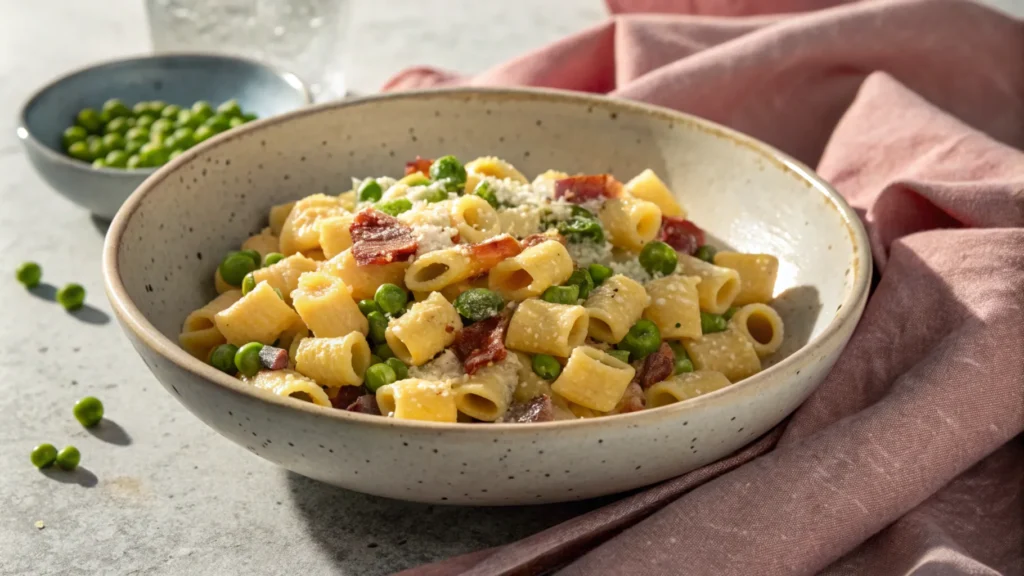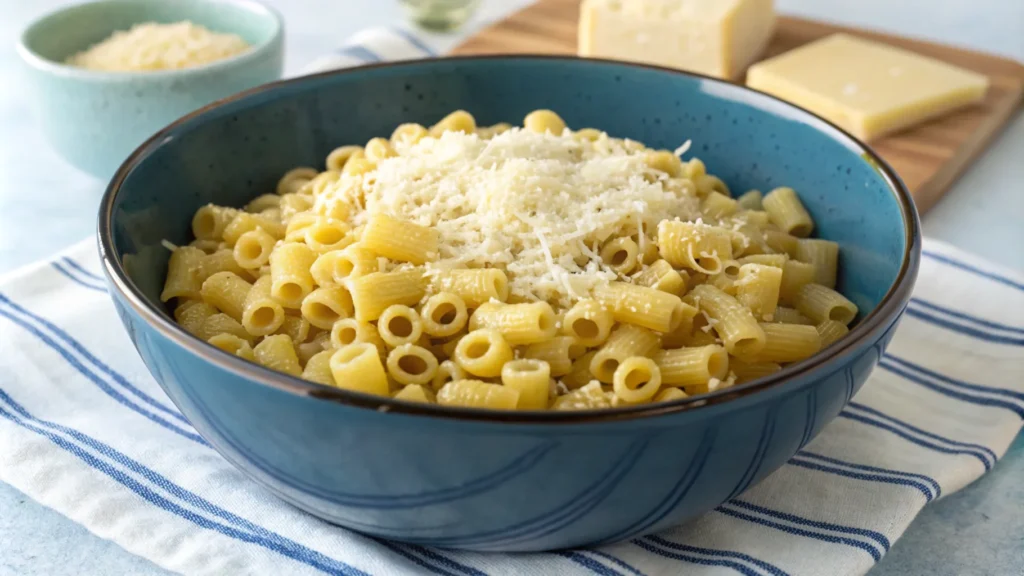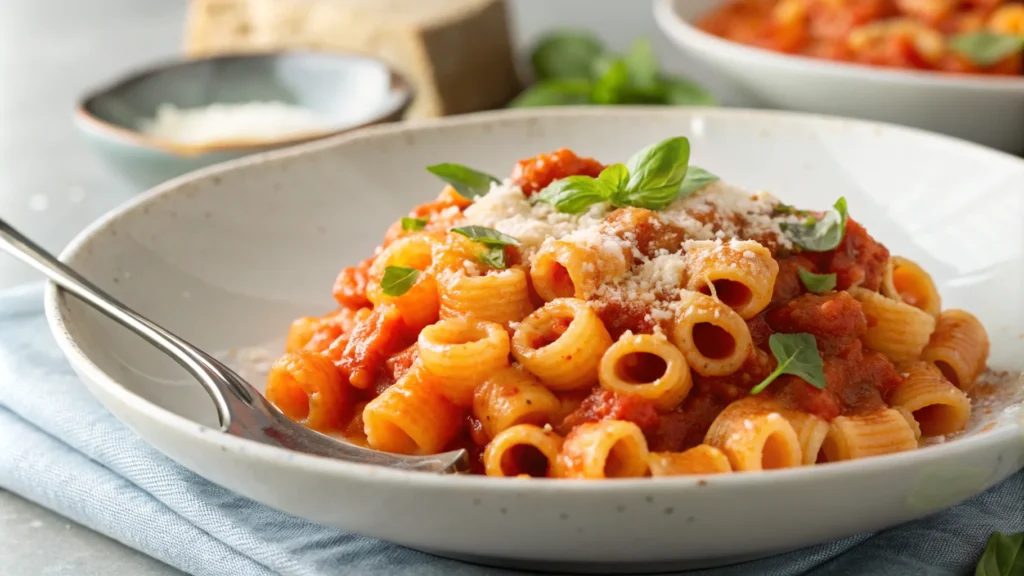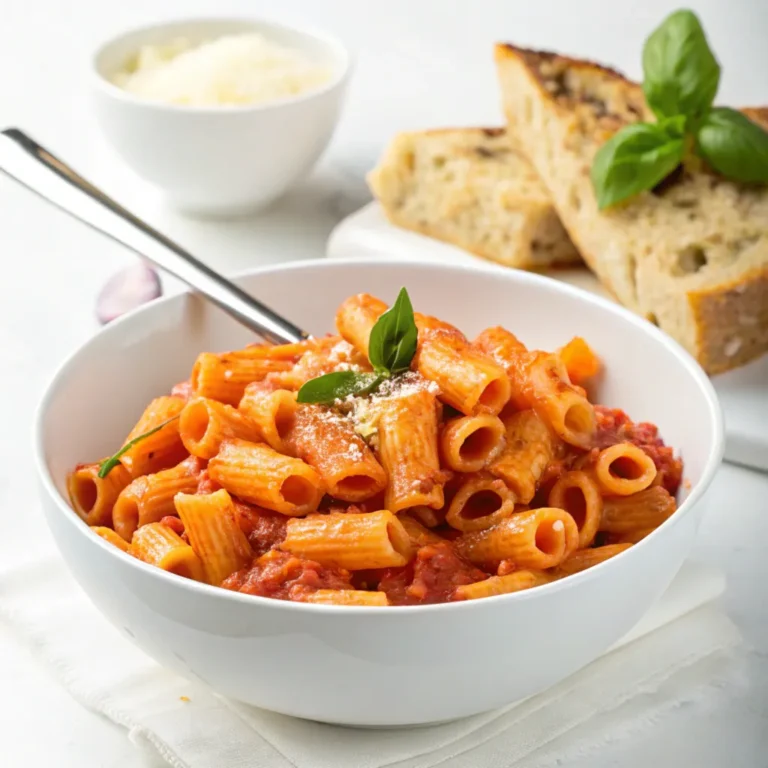Ditalini pasta, a beloved ingredient in Italian kitchens, is more than just a small, tubular noodle. This versatile pasta shape shines in hearty soups, vibrant salads, and even modern fusion dishes. In this Thorough guide, we’ll dive into the origins of ditalini pasta, discover its cultural significance, share tips for cooking it perfectly, and uncover its health benefits. Whether you’re a culinary novice or a seasoned chef, this guide has something to inspire your next meal.
Table of Contents
Introduction to Ditalini Pasta
What is Ditalini Pasta?
Ditalini pasta translates to “small thimbles” in Italian, which perfectly describes its shape—tiny, short tubes that are ideal for soups, stews, and more. Its size and shape make it a favorite in Italian comfort food, as it holds up well in broths and pairs beautifully with beans, vegetables, and meats. Popular in both traditional and modern recipes, ditalini adds a delightful texture to any dish.
Historical Background and Origins
Hailing from southern Italy, ditalini pasta was originally crafted for humble, hearty meals. Historically, it was paired with legumes in classic dishes like Pasta e Fagioli—a staple that reflects the region’s resourceful culinary traditions. Over time, ditalini gained popularity for its adaptability, earning a permanent spot in pantries across Italy and beyond.
Common Uses of Ditalini in Italian Cuisine
In Italian cooking, ditalini pasta is often the star of soups like minestrone and Pasta e Ceci (pasta with chickpeas). Its compact size makes it ideal for absorbing flavors without overwhelming other ingredients. Beyond soups, it’s used in pasta salads and baked dishes, proving its versatility in both warm and cold preparations.
This humble yet indispensable pasta invites creativity in the kitchen, offering countless ways to bring comforting, flavorful meals to life. Stay tuned for recipes and tips that’ll Promote your culinary repertoire!

Popular Ditalini Pasta Recipes
Classic Pasta e Fagioli with Ditalini
One of the most iconic dishes featuring ditalini pasta is Pasta e Fagioli, or “pasta and beans.” This Italian classic combines simple, wholesome ingredients like creamy cannellini beans, tangy tomato broth, and fragrant herbs to create a comforting meal. Ditalini pasta is perfect for this dish, as its small size complements the tender beans and absorbs the rich flavors of the broth. Whether served as a starter or a hearty main course, this dish embodies the warmth of traditional Italian cooking.
Minestrone Soup with Ditalini
Another timeless recipe is minestrone soup, where ditalini pasta takes center stage in a colorful medley of vegetables. The pasta’s tubular shape holds just the right amount of broth, ensuring a burst of flavor in every bite. From zucchini and carrots to kale and beans, this versatile soup adapts to seasonal produce. By adding ditalini pasta near the end of cooking, you can keep its texture firm, creating a satisfying balance in this hearty soup.
Refreshing Ditalini Pasta Salads
Looking for a lighter dish? Ditalini pasta shines in cold salads, where its bite-sized shape pairs wonderfully with fresh ingredients like cherry tomatoes, cucumbers, and crumbled feta. Tossed in a zesty vinaigrette, these salads are perfect for picnics or as a side dish for grilled meals. For a more robust version, add proteins like shredded chicken or chickpeas, creating a quick and nutritious lunch option.
Creative Modern Recipes Featuring Ditalini
For adventurous cooks, ditalini pasta offers endless possibilities in contemporary recipes. Try using it in a risotto-style dish with creamy sauces, roasted vegetables, and grated parmesan for a twist on tradition. Alternatively, bake it into casseroles with layers of cheese, marinara sauce, and savory meats for a comforting, crowd-pleasing meal. These creative takes on ditalini pasta are proof that this little noodle has big potential.
Cooking Ditalini Pasta to Perfection
Choosing the Right Type of Ditalini Pasta
Selecting high-quality ditalini pasta is essential for achieving the best results. Opt for brands that use durum wheat semolina, known for its firm texture and ability to hold sauces. For those exploring dietary preferences, gluten-free versions are also available, ensuring everyone can enjoy this versatile pasta.
Cooking Tips for Optimal Texture
Cooking ditalini pasta to perfection requires attention to detail. Always use a generous pot of salted boiling water, as the salt Improves the pasta’s flavor. Boil it for the time recommended on the package, usually 8–10 minutes, for an ideal al dente texture. If adding it to soups, slightly undercook it to prevent it from becoming too soft as it absorbs the broth.
Pairing Ditalini with Sauces and Ingredients
The compact size of ditalini pasta makes it incredibly versatile, allowing it to pair beautifully with a variety of sauces and ingredients. For example, it works wonderfully with light, brothy sauces, enhancing delicate flavors without overpowering the dish. Similarly, it complements hearty, creamy sauces that cling to its tubular shape, creating a rich and satisfying bite.
For a quick and effortless weeknight meal, you can toss cooked ditalini pasta with garlic, olive oil, and a sprinkle of red pepper flakes for a touch of heat. Alternatively, it’s an excellent choice for casseroles and baked dishes, where it absorbs the flavors of melted cheese and savory fillings. In addition, its shape makes it ideal for layering with ingredients like ground meats, roasted vegetables, or a tangy marinara sauce.
By mastering these cooking techniques and combining ditalini pasta with the right sauces and ingredients, you’ll not only expand your culinary repertoire but also transform even the simplest ingredients into unforgettable meals that everyone will love.

Nutritional Insights and Benefits
Caloric Content and Macronutrient Profile
Ditalini pasta offers a balanced source of carbohydrates, making it an excellent choice for quick energy. A typical serving of cooked ditalini contains about 200 calories, with minimal fat and a decent amount of protein, especially when paired with beans or meat in recipes like Pasta e Fagioli. Additionally, whole-grain or gluten-free options provide added fiber, which supports digestive health.
Health Benefits of Including Pasta in Your Diet
Including ditalini pasta in your meals can contribute to a well-rounded diet, especially when combined with nutrient-rich ingredients like vegetables, lean proteins, and healthy fats. The pasta’s compact size allows it to be a perfect carrier for soups, stews, and salads that are brimming with vitamins and minerals. Choosing high-quality pasta made from durum wheat semolina Secures a slow energy release, helping maintain stable blood sugar levels.
Ditalini and Balanced Meals
When used thoughtfully, ditalini pasta fits Smoothly into balanced meals. For example, pairing it with legumes in a hearty soup creates a complete protein, while adding colorful veggies boosts antioxidant intake. This versatility makes ditalini a smart choice for creating dishes that are as nutritious as they are delicious.
Cultural Significance of Ditalini Pasta
Role in Italian Culinary Traditions
In Italian cuisine, ditalini pasta holds a special place, especially in traditional family recipes passed down through generations. It’s a common ingredient in rustic dishes like Pasta e Ceci, where its small size helps create a satisfying texture alongside chickpeas and olive oil. This pasta’s use is a nod to the simplicity and ingenuity of Italian home cooking.
Regional Variations of Ditalini Dishes
Different regions in Italy put their own spin on recipes featuring ditalini pasta. For instance, in southern Italy, it’s often combined with hearty tomato-based broths and fresh basil, while northern variations might incorporate butter and cheese for a creamier dish. These adaptations reflect the local ingredients and flavors unique to each area.
Festive and Seasonal Uses of Ditalini
During holidays and seasonal celebrations, ditalini pasta frequently appears in comforting soups and casseroles. Its adaptability makes it an ideal choice for festive meals where warmth and tradition are at the heart. Whether served in a rich minestrone for winter gatherings or a chilled pasta salad in summer, ditalini’s versatility keeps it on the menu year-round.
For more pasta inspiration, discover other comforting pasta recipes, like the Marry Me Chicken Pasta on Masterly Recipes!
FAQs
What is the Best Way to Store Ditalini Pasta?
Storing ditalini pasta correctly Secures it stays fresh for months. For uncooked pasta, keep it in an airtight container in a cool, dry place, away from direct sunlight. If you’ve already cooked it, refrigerate leftovers in a sealed container, ideally consumed within 3–4 days. Adding a light drizzle of olive oil before storing can prevent it from sticking together.
Can Ditalini Be Substituted in Recipes?
Absolutely! While ditalini pasta has a unique charm, you can substitute it with similar small pasta shapes like orzo, macaroni, or small shells when needed. However, keep in mind that substitutions may slightly alter the dish’s texture or ability to hold flavors. If you’re making soups, ditalini remains the best option due to its ability to stay firm and absorb broth evenly.
Why Ditalini Pasta is Perfect for Soups
Ditalini pasta is a go-to for soups because its small, tube-like structure perfectly complements the broth without overwhelming the dish. It absorbs flavors from the soup while maintaining its bite, making it an ideal addition to hearty dishes like minestrone and Pasta e Fagioli. Its size also Secures easy eating—no need for excessive cutting or scooping!
For more comforting soup recipes, check out our Lemony Shrimp and Bean Stew for inspiration!
Where to Buy and How to Choose Quality Ditalini Pasta
Popular Sources and Specialty Stores
Finding high quality ditalini pasta is straightforward, as it’s available in most grocery stores. If you’re looking for something unique, Italian specialty shops and online retailers often stock artisanal options made with traditional techniques. These specialty varieties can add an authentic touch to your dishes, whether you’re preparing soups, salads, or casseroles.
Tips for Spotting High-Quality Ditalini
When shopping for ditalini , it’s crucial to focus on products made from 100% durum wheat semolina because this guarantees a firm texture and a rich flavor that holds up well in cooking. Additionally, always check for smooth, evenly shaped pasta pieces, as this consistency Secures the pasta will cook evenly. On the other hand, avoid options with cracks or irregular coloring, since these can indicate lower-quality processing and may affect the texture after cooking.
If you’re considering gluten-free alternatives, be sure to look for varieties made from rice or corn flour, as these closely mimic the texture and taste of traditional pasta. Furthermore, choosing pasta from trusted sources Secures better results in your recipes, whether you’re making a hearty soup, a light salad, or a baked dish.
By paying attention to these details, you’ll always select ditalini pasta that delivers meals that are both flavorful and satisfying every single time.
The Future of Ditalini in Global Cuisine
Ditalini’s Rising Popularity Worldwide
Ditalini pasta is no longer confined to Italian kitchens; it has gained significant traction on a global scale. Thanks to its small size and versatility, it Smoothly fits into dishes across various cuisines. For instance, as fusion cooking becomes more mainstream, chefs are integrating ditalini into recipes that blend flavors from different cultures. Additionally, its ability to hold sauces and absorb broths makes it a favorite for international variations of soups and casseroles.
Fusion Dishes Featuring Ditalini
The adaptability of ditalini pasta opens doors to countless fusion dishes. For example, in a spicy Thai coconut soup, ditalini adds a hearty element while soaking up the rich, tangy flavors. Moreover, it works beautifully in Tex-Mex-inspired casseroles, pairing perfectly with black beans, roasted corn, and gooey cheese. These inventive combinations are redefining how this pasta can be used in modern kitchens. As culinary trends lean towards innovation, ditalini is certain to play an even greater role in inspiring global recipes.

Conclusion and Takeaways
Why Ditalini Should Be in Your Pantry
Without a doubt, ditalini pasta deserves a spot in every pantry. Not only does it excel in traditional Italian dishes, but it also adapts wonderfully to diverse, modern recipes. Whether you’re making hearty soups, fresh salads, or baked casseroles, its small size and texture add something special to every bite.
Inspiring Ideas to Cook with Ditalini
When planning your next meal, consider ditalini as your starting point. It blends effortlessly into a variety of dishes, making it an essential ingredient for both classic comfort foods and bold new creations. Try it today and let your creativity shine!

